On the 210th birth anniversary of Danish author Hans Christian Andersen, popularly known for his many fairy tales, we take a look at a selection of some of his finest works in the genre that impacted popular culture
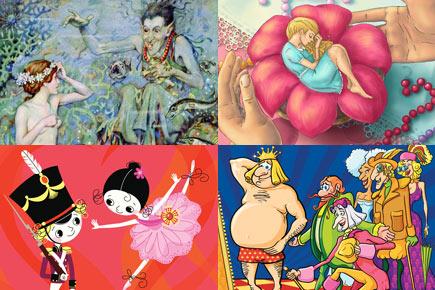
Fairy Tales
The Little Mermaid: This Hans Christian Anderson story, which was first published in 1837, has been adapted into various media forms including theatre, opera, feature films, television shows and more. The most notable adaptation was Walt Disney's 1989 animated masterpiece. The Little Mermaid, tells the tale of a a young mermaid willing to give up her life in the sea and her identity as a mermaid to gain a human soul and the love of a human prince.
ADVERTISEMENT
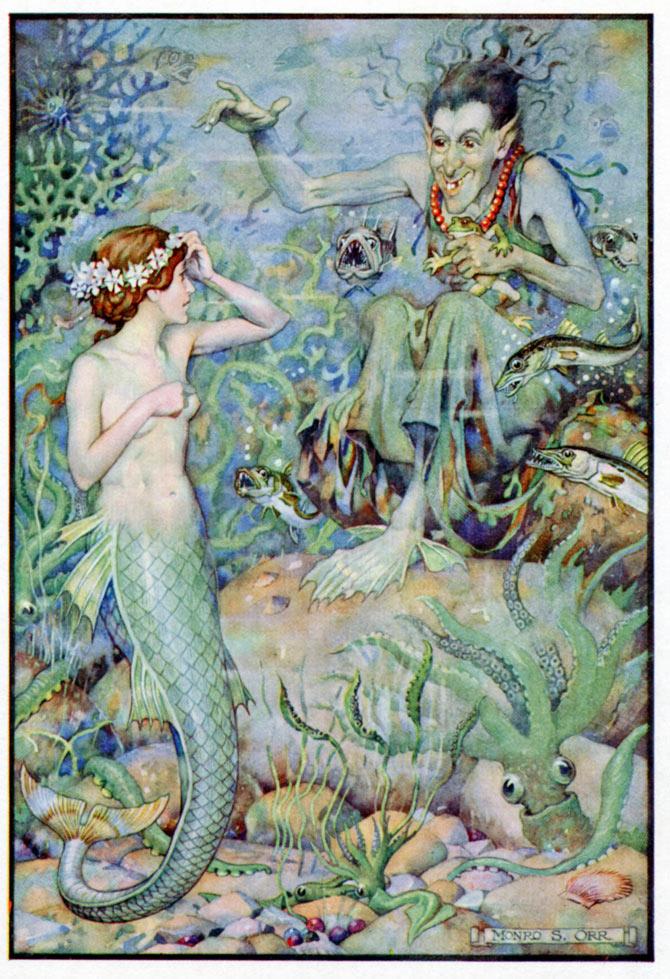
An undated illustration depicting a scene from the original fairy tale
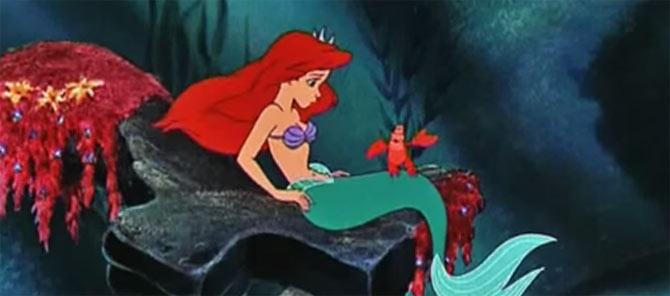
A still from Walt Disney's 1989 animated feature film adaptation. Pic/YouTube
The Disney adaptation was notable in featuring several differences from the original story. It features a happy ending in which the mermaid in fact marries the prince, which has been criticised by the fans of HC Anderson's original work, who opine that, "it exploits society's obsession with physical beauty and romantic love." The film was followed by an animated series and a sequel titled 'The Little Mermaid II: Return to the Sea' in 2008, concerning the adventures of the Little Mermaid's human daughter Melody, who longs to be a mermaid. A 2008 prequel titled, 'The Little Mermaid: Ariel's Beginning' was also released, in which the story is set before the events of the original film and features some backstory on lead character Ariel's mother.
The Ugly Duckling: The story was first published on 11 November 1843 in Copenhagen, Denmark, and met with critical acclaim. It is about a homely little bird born in a barnyard who suffers abuse from the others around him until, much to his delight and to the surprise of others, he matures into a beautiful swan, the most beautiful bird of all. 'The Ugly Duckling' is beloved by many worldwide as a tale about personal transformation for the better.
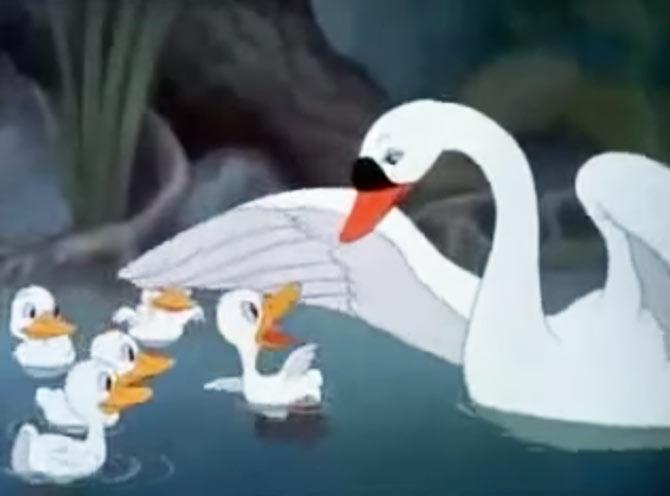
A still from Walt Disney's 1939 animated short, 'The Ugly Duckling' (1939). Pic/YouTube
Most famous adaptations include Walt Disney's Silly Symphonies animated shorts that were produced in 1931 and 1939 respectively. The 1939 version, which was also in colour won the Academy Award for Best Short Subject (Cartoons) and was also the last cartoon to be made under the Silly Symphonies banner. The 1954 Tom and Jerry cartoon 'Downhearted Duckling', which is loosely based on the original story is also a notable mention.
The Emperor's New Clothes: This humorous tale is about two weavers who promise an Emperor a new suit of clothes that is invisible to those who are unfit for their positions, stupid, or incompetent. When the Emperor parades before his subjects in his new clothes, no one dares to say that he doesn't see any suit of clothes until a child cries out, "But he isn't wearing anything at all!"
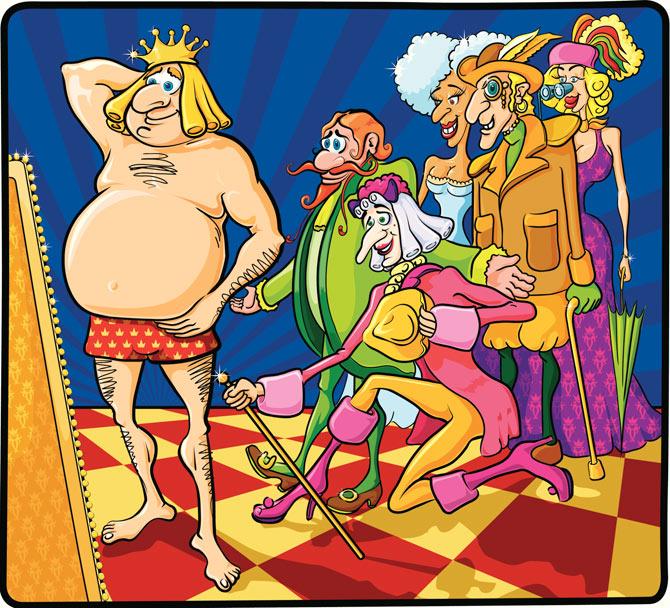
An illustration depicting the scene where the Emperor tries on his 'new clothes'
'The Emperor's New Clothes' was on 7 April 1837 as the third and final installment of Andersen's Fairy Tales Told for Children. It has been translated into over a 100 languages and has been adapted into theatrical films, television shows, numerous short stories, plays, spoofs, and animated films. The story inspired a 1919 Russian film directed by Yuri Zhelyabuzhsky, a 1987 musical starring Sid Caesar, a 1980 parody tale titled, "The Emperor's Old Clothes" by computer scientist C.A.R. Hoare among others. A boardgame sharing the story's title was put on Kickstarter in 2013 by a man named Johnathan Liu that came with a blank box, a blank board, blank cards, and some other blank tokens. In an instance of life imitating art, some people backed it—thinking there was something more—and the reveal was that there was actually nothing other than that.
Thumbelina: It was published on 16 December 1835 as one of a series of seven fairy tales in 1835 which were not well received by the Danish critics who disliked their informal style and their lack of morals. It's about a tiny girl and her adventures with appearance- and marriage-minded toads, moles, and insects. She successfully avoids their intentions before falling in love with a flower-fairy prince just her size.
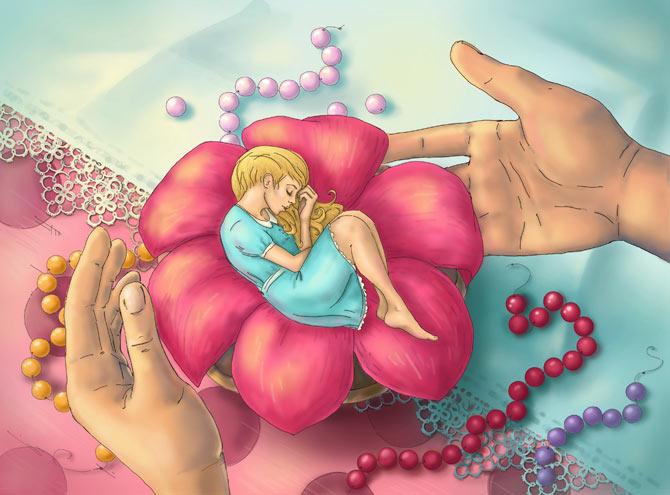
An illustration of a scene from the original fairy tale
Famous adaptations of 'Thumbelina' include a 1985 live-action television dramatization of the tale starring 'Star Wars' actress Carrie Fisher was broadcast as the 12th episode of the anthology series Faerie Tale Theatre, a 1994 Warner Brothers film and a 2002 direct-to-DVD animated movie, 'The Adventures of Tom Thumb and Thumbelina', which brought together the two most famous tiny people of literature, with Thumbelina voiced by Hollywood actress Jennifer Love Hewitt among many others.
The Steadfast Tin Soldier: It's the story about a tin soldier's love for a paper ballerina, who both perish in a fire after several adventures. Published on 2 October 1838, it was Andersen’s first not based upon a folk tale or a literary model.
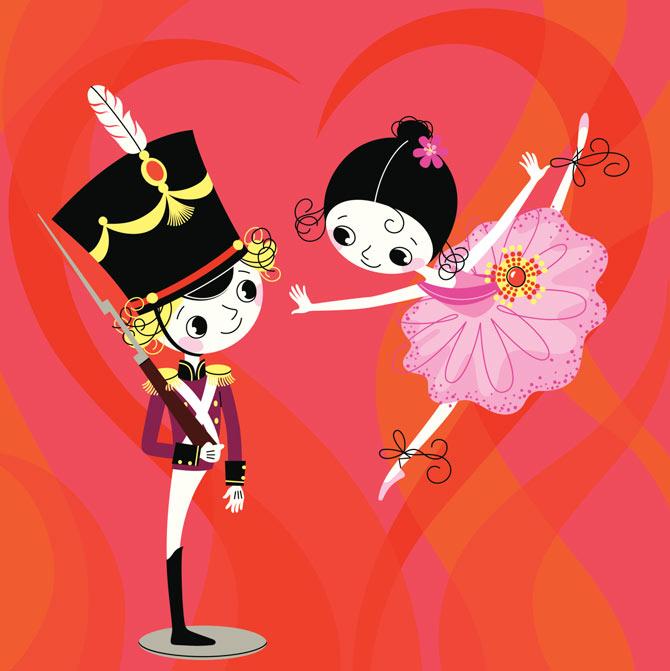
The tin soldier and the ballerina
American animator and co-creator of Walt Disney's iconic Mickey Mouse loosely adapted, 'The Steadfast Tin Soldier' in 1934 as a cartoon short titled, 'The Brave Tin Soldier', which features an evil jack-in-the-box toy just like the original story. In Disney's film Fantasia 2000, an adaptation of the tale that differs slightly from Andersen's portrays the ballerina as a porcelain figure. The soldier is disappointed to discover the ballerina has two legs, but the ballerina still accepts him; at the end, the jack-in-the-box villain is the one that perishes in the fire instead of the pair.
The Nightingale: This 1843 Hans Christian Andersen fairly tale is about a Chinese emperor who prefers the tinkling of a bejeweled mechanical bird to the song of a real nightingale. When the Emperor is near death, the nightingale's song restores his health.
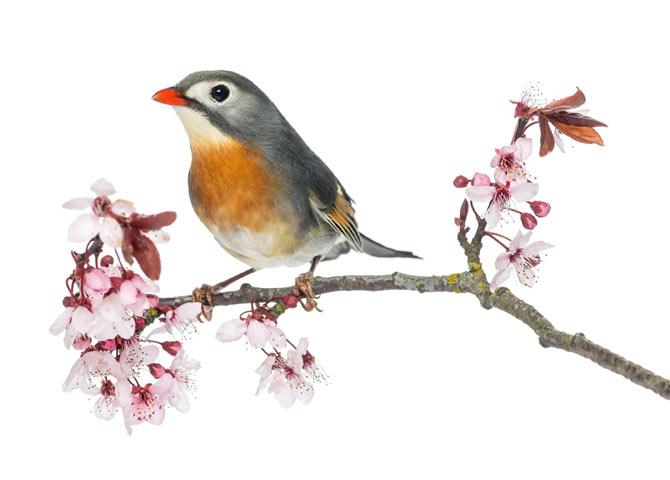
A Chinese nightingale as depicted in the story
The story which was well received upon its publication in Copenhagen, is considered by many to be inspired by the author's unrequited love for opera singer Jenny Lind, the "Swedish nightingale". Notable adaptations include Russian composer Igor Stravinsky's 1914 opera 'Le Rossignol', two famous animated adaptations namely, Lotte Reiniger's shadow puppet production "The Chinese Nightingale" in 1927, and Czech Jirí Trnka's "The Emperor's Nightingale" in 1948. On television, the tale was adapted for Shelley Duvall's 'Faerie Tale Theatre' in 1983 with rock and roll music legend Mick Jagger as the Emperor, Bud Cort as the Music Master, Barbara Hershey as the Kitchen Maid, Edward James Olmos as the Prime Minister, and Shelley Duvall as the Nightingale and Narrator.
 Subscribe today by clicking the link and stay updated with the latest news!" Click here!
Subscribe today by clicking the link and stay updated with the latest news!" Click here!






